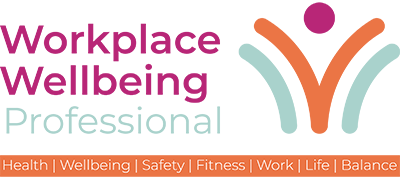Almost a third of employees say they feel depressed when thinking about their future at work, while fewer than half describe themselves as hopeful, new research shows.
O.C. Tanner, a global provider of employee recognition software and services, estimated that 32 % of respondents reported feelings of depression about their workplace future, and 49 % reported feeling hopeful. The figures, derived from the 2026 edition of its Global Culture Report, which surveyed a total of 38,929 employees across 24 countries, including 1,668 respondents from the region.
According to the report, the emotional state of hope — or its absence — is strongly linked with key business outcomes such as innovation, retention and performance. Employees who strongly felt hopeful were five times more likely to innovate, eight times more likely to deliver great work and four times more likely to stay with their employer.
Hope as a Performance Factor
The research indicates that hope is not simply a personal state but a measurable factor in organisational success. By linking feelings of optimism about the future with higher likelihood of innovation and retention, the report positioned hope as a strategic lever rather than a soft wellbeing benefit.
Robert Ordever, European managing director at O.C. Tanner, described the situation as a significant organisational risk. “A feeling of hopelessness in the workplace is both a drain on the individual and the organisation, holding back innovation and great work while leading to high staff turnover,” he said.
What Blocks Hope at Work
The report also identified common barriers that inhibit employees from feeling hopeful in their roles. They included:
- A lack of appreciation or recognition for effort and results;
- Feeling unseen or undervalued in the workplace;
- Competing priorities and unclear objectives;
- Fear of missing deadlines or failing to deliver on key projects;
- Insufficient resources or support to overcome setbacks.
Such obstacles undermine employees’ belief that their work has meaning or that they can progress, which in turn suppresses their sense of hope and engagement.
Ordever said, however, that organisations were not powerless. “Leaders can practically take action by encouraging employees to create inspiring but achievable goals, recognising their efforts and results and providing the resources and systems to overcome the main barriers to hope,” he said.
Practical Steps Organisations Can Take
The report emphasised that hope can be actively nurtured through concrete organisational design and culture practices. Among the recommended actions were:
Set Inspiring But Achievable Goals
Ensure employees understand where the organisation is going and how their own role contributes to that vision. Goals should stretch individuals without overwhelming them so that they feel empowered rather than helpless.
Recognition and Appreciation
Recognition should be timely, specific to contribution and visible across roles. When employees feel seen, valued and that their work matters, their hope increases and engagement improves.
Clear Support Systems and Resources
Organisations should provide the tools, training and support employees need when they face setbacks or shifting priorities. This may include mentoring, coaching, peer networks and resource access to reduce fear of falling behind.
Remove Barriers and Adjust Work Design
Review workloads, role clarity and autonomy so employees are not paralysed by competing demands or lack of control. Allowing people to reset after setbacks and to see progress builds confidence and hope.
Narrate a Path Forward
Communicating career progression, learning opportunities and change management helps employees visualise a future rather than feel trapped in a static present. When future possibility is visible, hope grows.
What Leaders Can Do
The role of leadership emerged as critical in shaping hope. The report argued that leaders need to move beyond being passive observers and take direct responsibility for shaping a hopeful workplace environment. This includes modelling optimism, reinforcing purpose and ensuring managers at all levels are equipped to engage employees around future ambition and current support.
“At a time when organisations are pushing to innovate in a changing business landscape, having a workforce that’s inspired and empowered to rise up to challenges is more important than ever,” Ordever said. “This is why leaders must look to nurture feelings of hope and optimism among their people, transforming ‘hope’ from an inert state to a dynamic part of the employee experience.”
Why It Matters Now
With rapid change, high employee turnover, innovation demands and pressures on wellbeing, organisations that ignore the emotional landscape risk higher attrition, lower productivity and slower innovation. The research suggests that employees who feel hopeless are more likely to disengage, leave or underperform.
By contrast, building hope is shown to correlate with stronger innovation rates, higher performance and improved retention. As such, hope becomes not just a wellness topic but a strategic priority for employers seeking sustainable workforce advantage.


